Color
Implementing color in Carbon has never been easier. We’ve provided users with several techniques to implement all your product’s color and theming needs.
Layering model tokens
There are two ways to implement the layering model in a theme, either by using explicit tokens or contextual tokens. These techniques can be used independently in a product or can be used together. Both methods produce the same visual result, the difference lays in how you develop with them. Designers only need to be concerned with the theme tokens.
The explicit layer tokens are standard design tokens. Each layer token corresponds to a specific layer on the page and is used exactly like any other token from Carbon. Contextual layer tokens are a special case of token where the value changes depending on where the token is used on a page. This type of token is incredibly useful for building reusable components that work across layers.
| Token type | Definition |
|---|---|
| Layer set tokens | Explicit layer tokens used to manually map the layering model onto components. They come in sets that pair with individual UI layers. |
| Contextual layer tokens | Abstrast code tokens used to automatically map the layering model onto components depending on where it used on the page. |
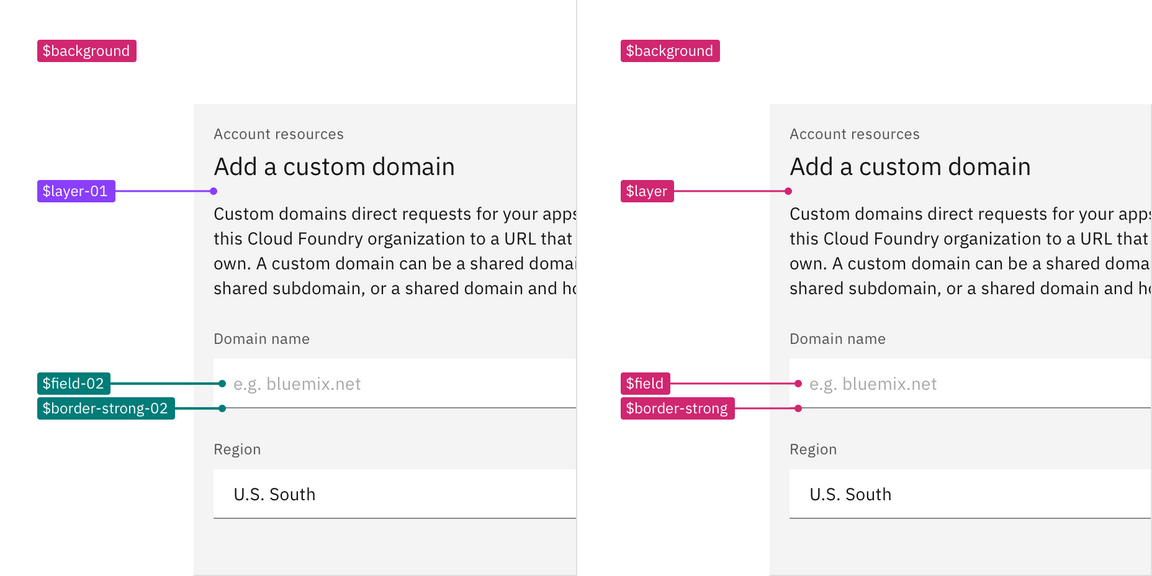
A visual spec using layer set tokens (left) versus contextual tokens (right).
Layer tokens
Layer tokens are explicit tokens used to manually map the layering model onto
components. They are used just like any other color token. They come in
predefined sets that pair UI and interaction colors together to match whichever
layer level they are a part of. Layer tokens replace what was the ui-00 color
tokens in v10 and are used in a similar way.
There are four levels of layering within a theme: base layer, layer 01, layer
02, and layer 03. After each layer of color added you move up to the next
layering level and use the next set of layering tokens. For example, on top of
$layer-01 you would place $layer-02. These layer set tokens are identified
by a number suffix (-01, -02, -03) attached to the core token name, such as
$field-03. The number indicates which set the token is a part of. Note:
previously in v10 many color tokens had numeral suffixes, now in v11 only
layering tokens will have this distinction.
Not all layer tokens use $layer as its token name. Layer tokens also include
border and field tokens as well as interactive state tokens for the various
layers. Field is considered a layer on top of the background it is placed on, so
a field placed on a $layer-02 background will use $field-03. Border tokens
however pair with its same number, so $field-03 pairs with $border-strong-03
in a text input. Only certain color tokens are a part of these layering sets.
Other tokens for elements like text and icon work across layer sets. For a
full list of the layer set tokens see the color usage
tab.
The below images show what a dropdown looks like across the layers within each theme. Included in the image are the tokens that make up each layer set and are identified by the following key.
- Base set: Magenta
- Layer set 01: Purple
- Layer set 02: Teal
- Layer set 03: Cyan



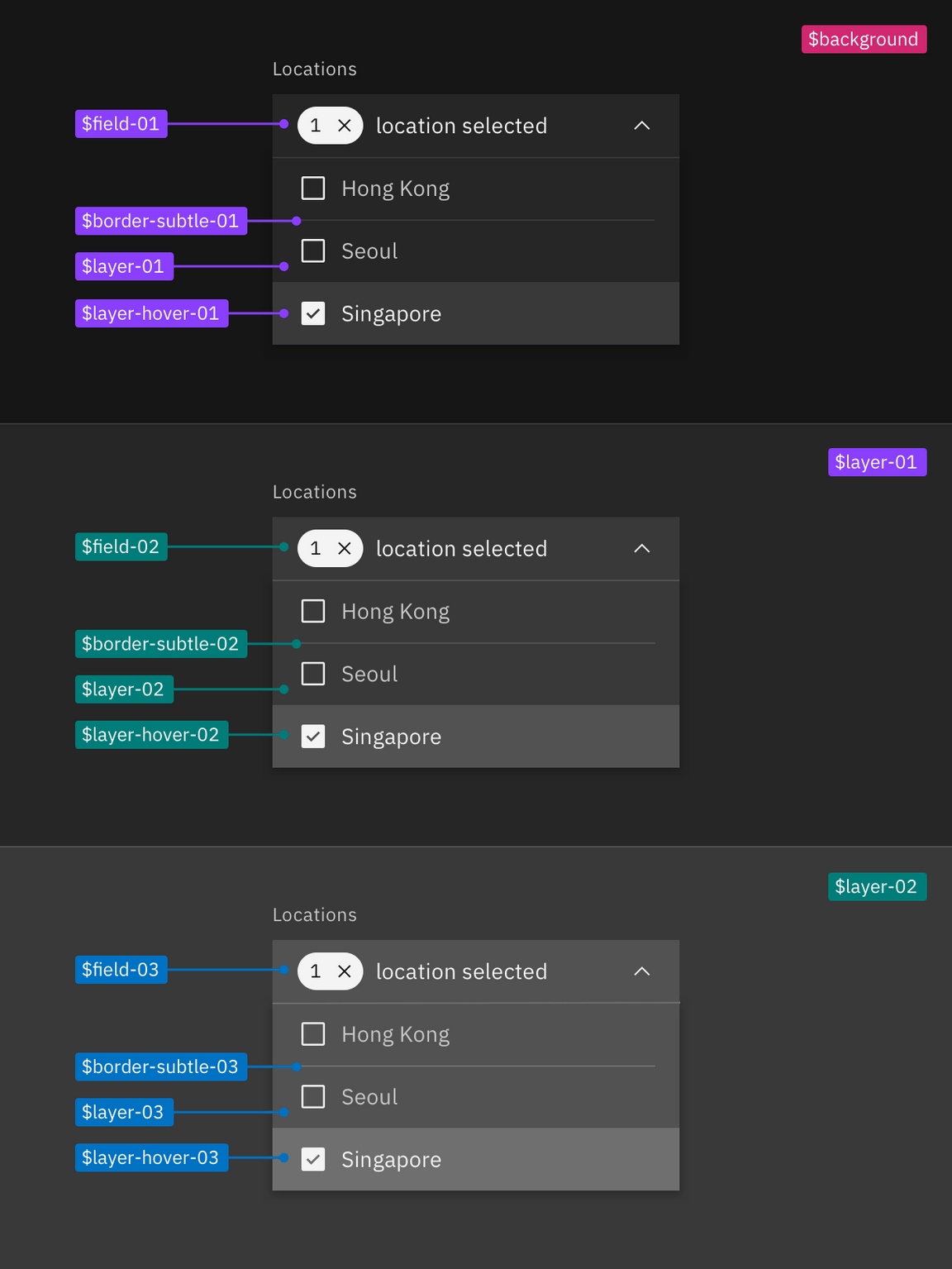
Applying layer set tokens in a layout
Referencing the image below, the starting base level is the page area behind and
above the tabs; it uses $background from the base set. The tab component is
layered on top of the page background to create the first layer. The selected
tab uses $layer-01 and the unselected tabs use $layer-accent-01 which is not
considered a proper layer but a supporting color for $layer inside of
components. The tab content area attached to the selected tab is also only one
layer above the base and so also uses $layer-01 as its background.
In the tab’s main section, the text input field is placed on top of $layer-01
making it a part of the next layer level and will use tokens from the 02 layer
set, so $field-02 and $border-strong-02. Also a part of the second layer
level are the tiles in the sub-section which includes the tile background
$layer-02 as well as the border between the tiles $border-subtle-02.
However, components added on top of the tiles—the text input and overflow
menu—are considered part of third layer level and will use tokens from the 03
layer set.
Token key
- Base set: Magenta
- Layer set 01: Purple
- Layer set 02: Teal
- Layer set 03: Cyan

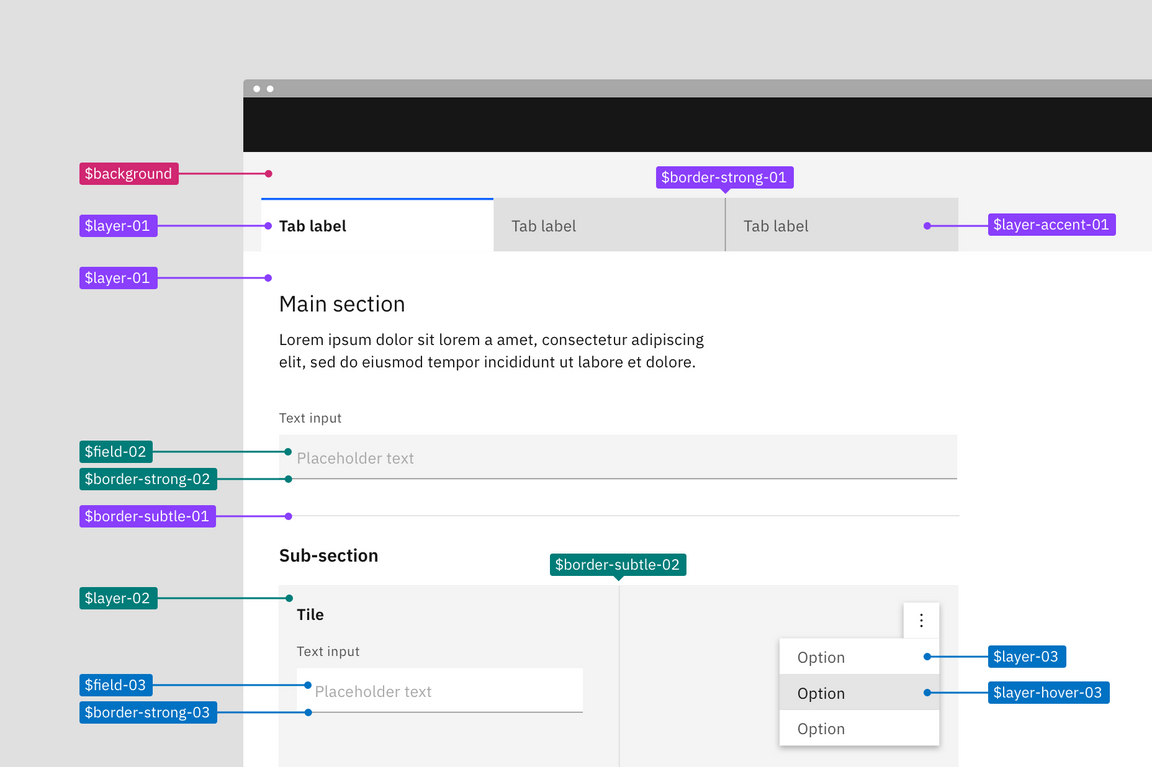

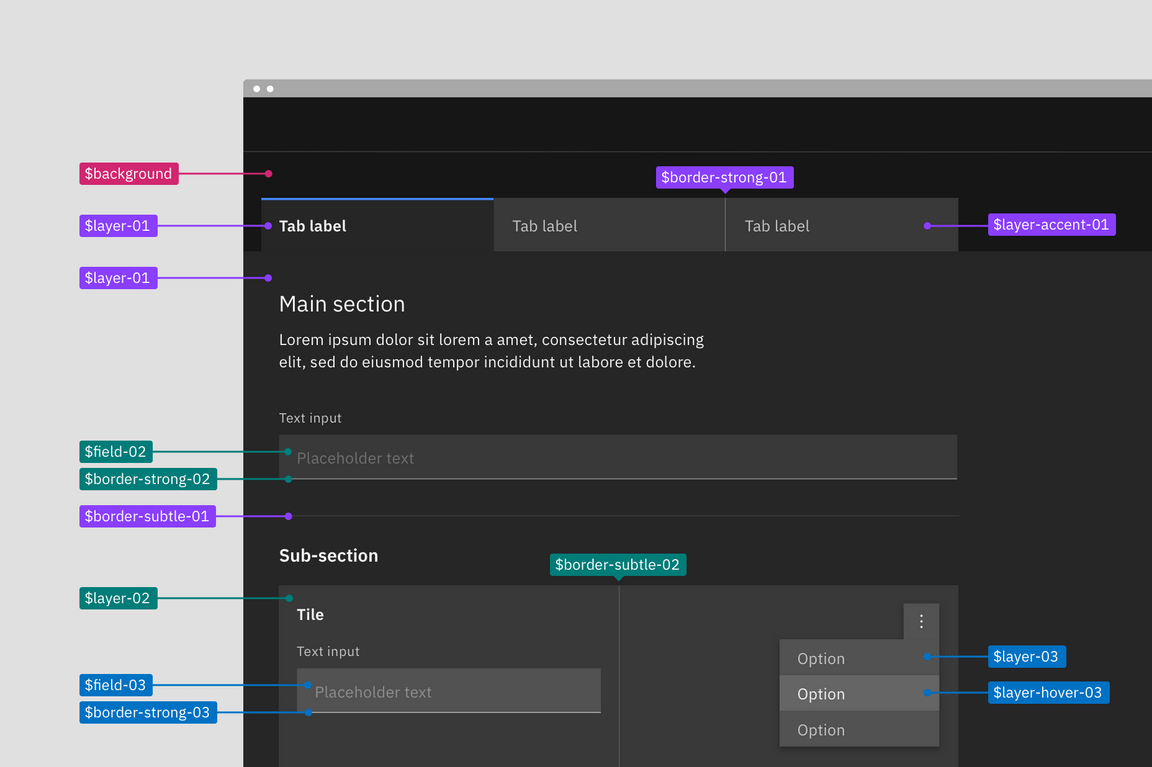
Building components with layer tokens
Building components with layer tokens works much like how you would have built
component variants in v10. For each layer level that a component lives on, a
separate component variation must be built using the explicit layer set tokens.
In v10, these color variants were known as the light prop variants, however
these new layering tokens allows for a three levels color variant in components
that wasn’t possible in v10.
Spec each component variant with its corresponding layer set tokens. For elements that are not part of the layering model like type or icons, use the normal color tokens as you would have in v10. These tokens will be the same across variants as they are high enough contrast not to need to change with each layer.
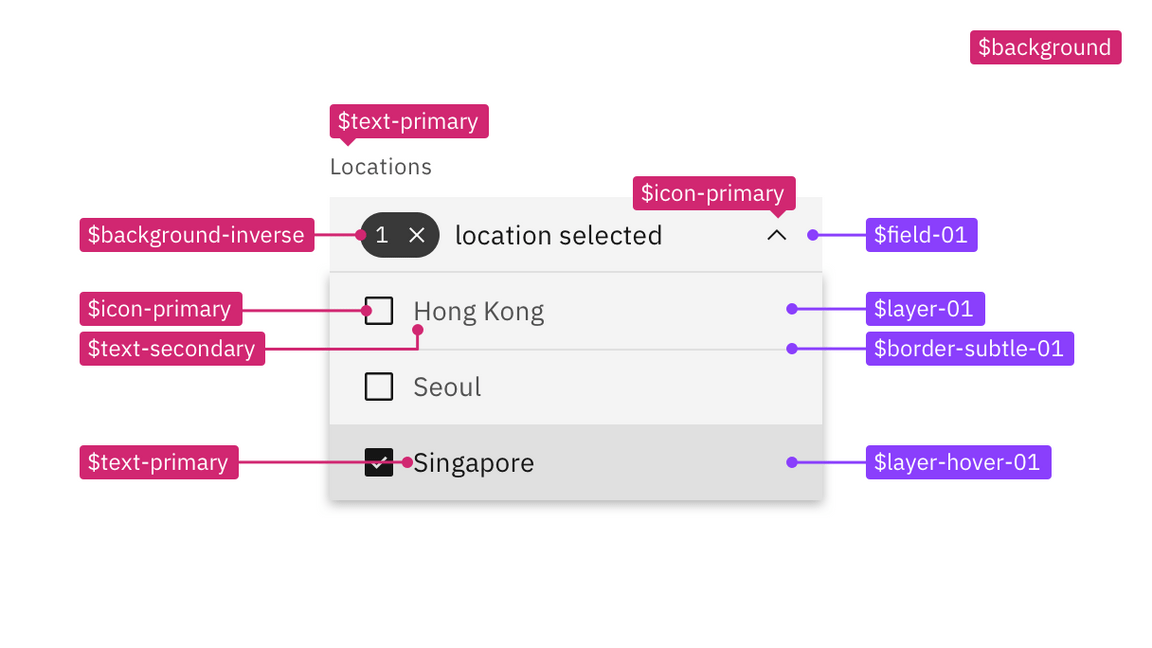
Example component spec in the white theme using the layer set 01 tokens.
Contextual layer tokens
Contextual tokens are used to automatically map the layering model onto components in code. A contextual token is aware of what layer it is placed on and will call the correct values needed for that layer. There is only one set of contextual tokens and it requires only one variant of a component to be built. Carbon components are built using the contextual tokens.
Contextual tokens have all the same type of tokens as the layer set except without the number prefixes. It does not matter what layer it sits on, the contextual token is always the same across layer levels.
To implement the nesting layers with contextual tokens in code, use the layer component.
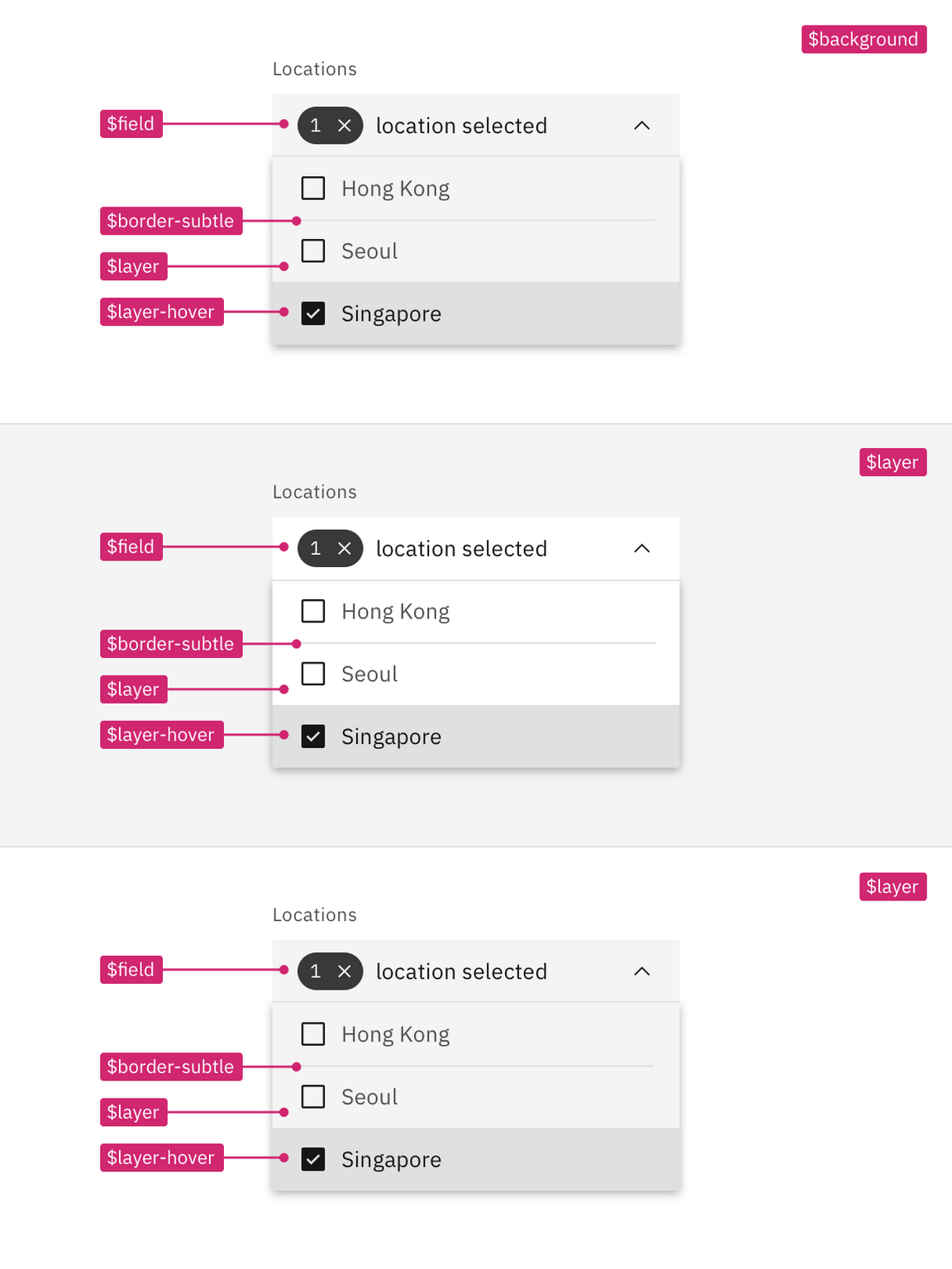
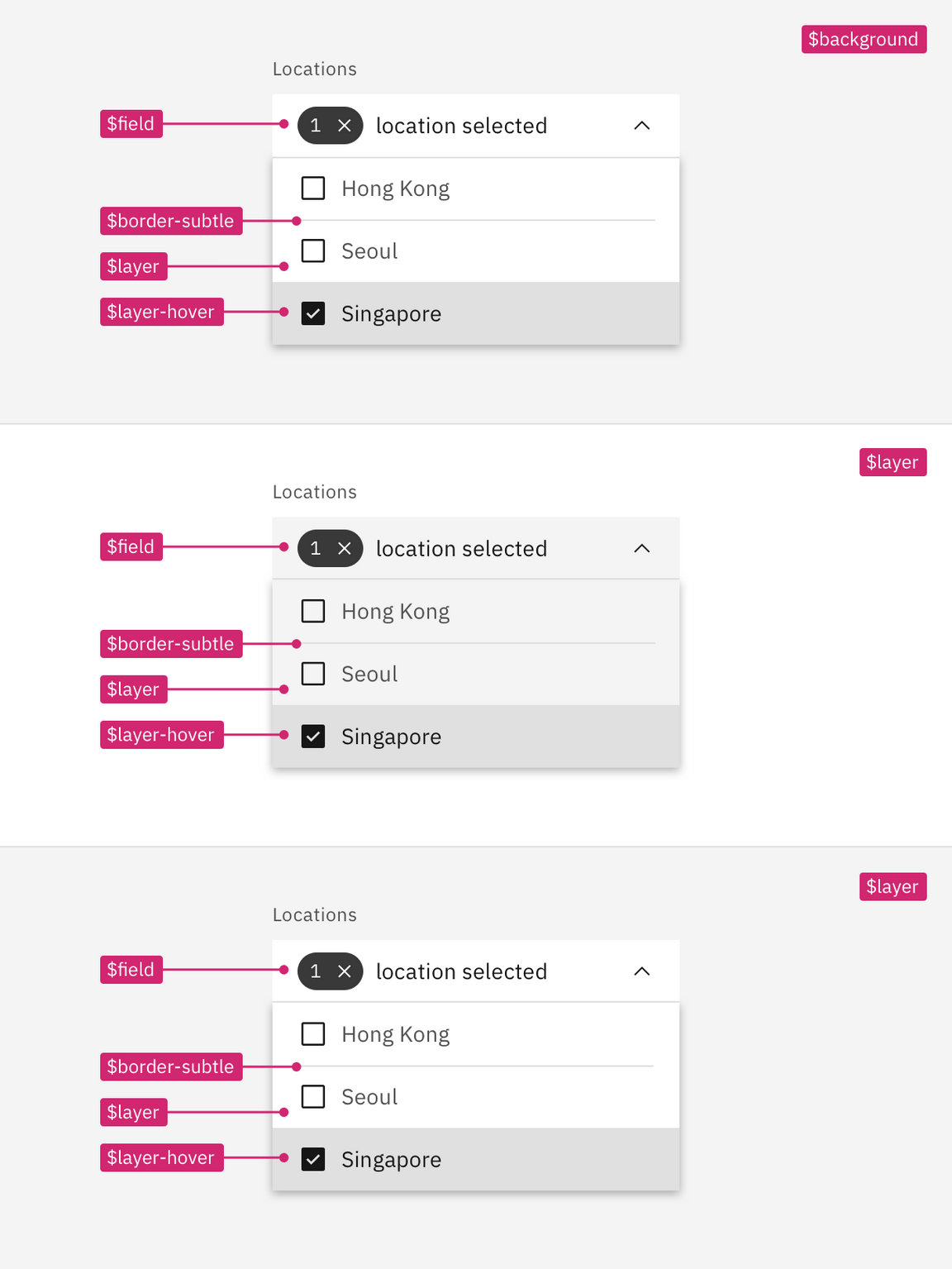
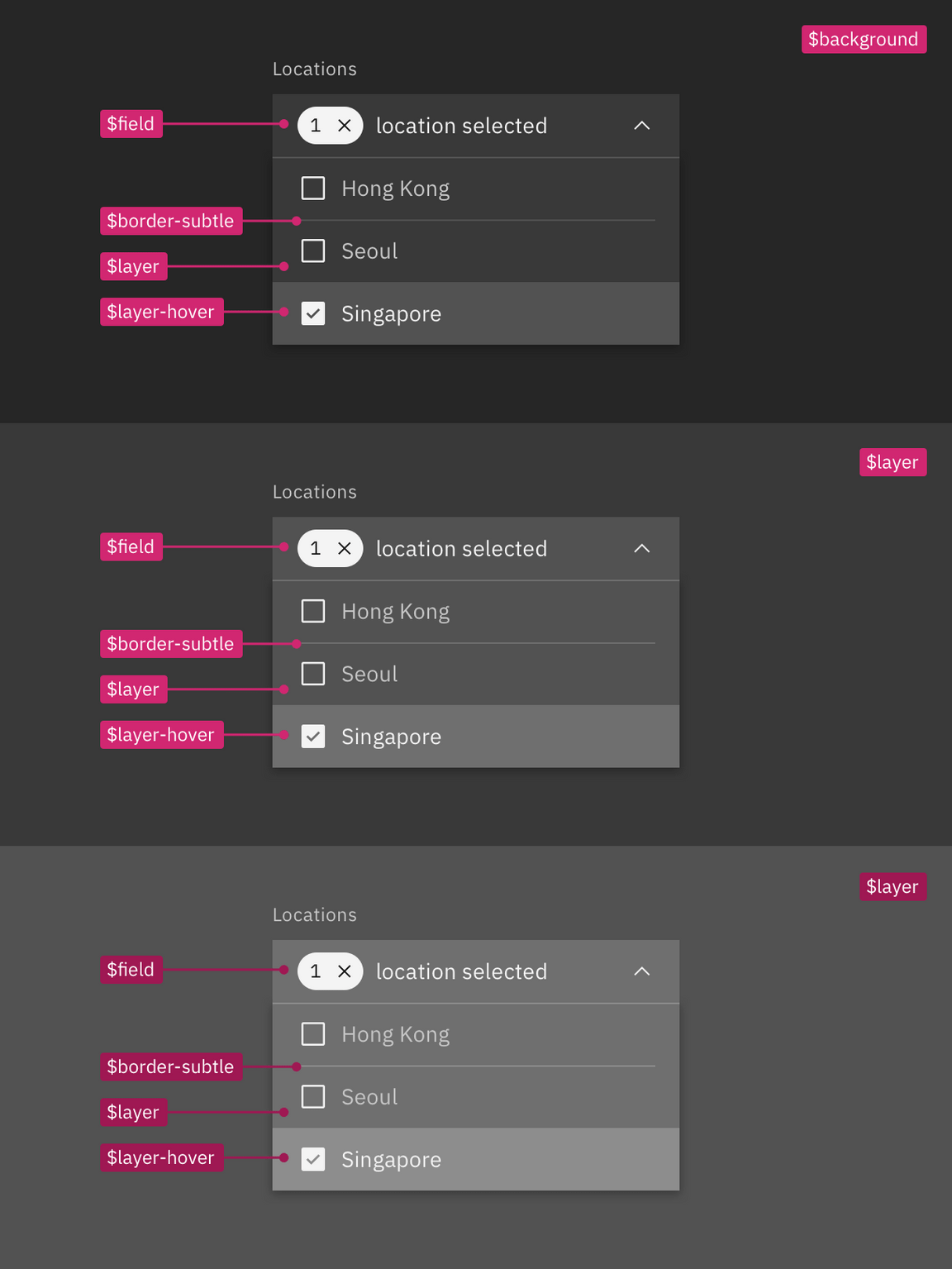
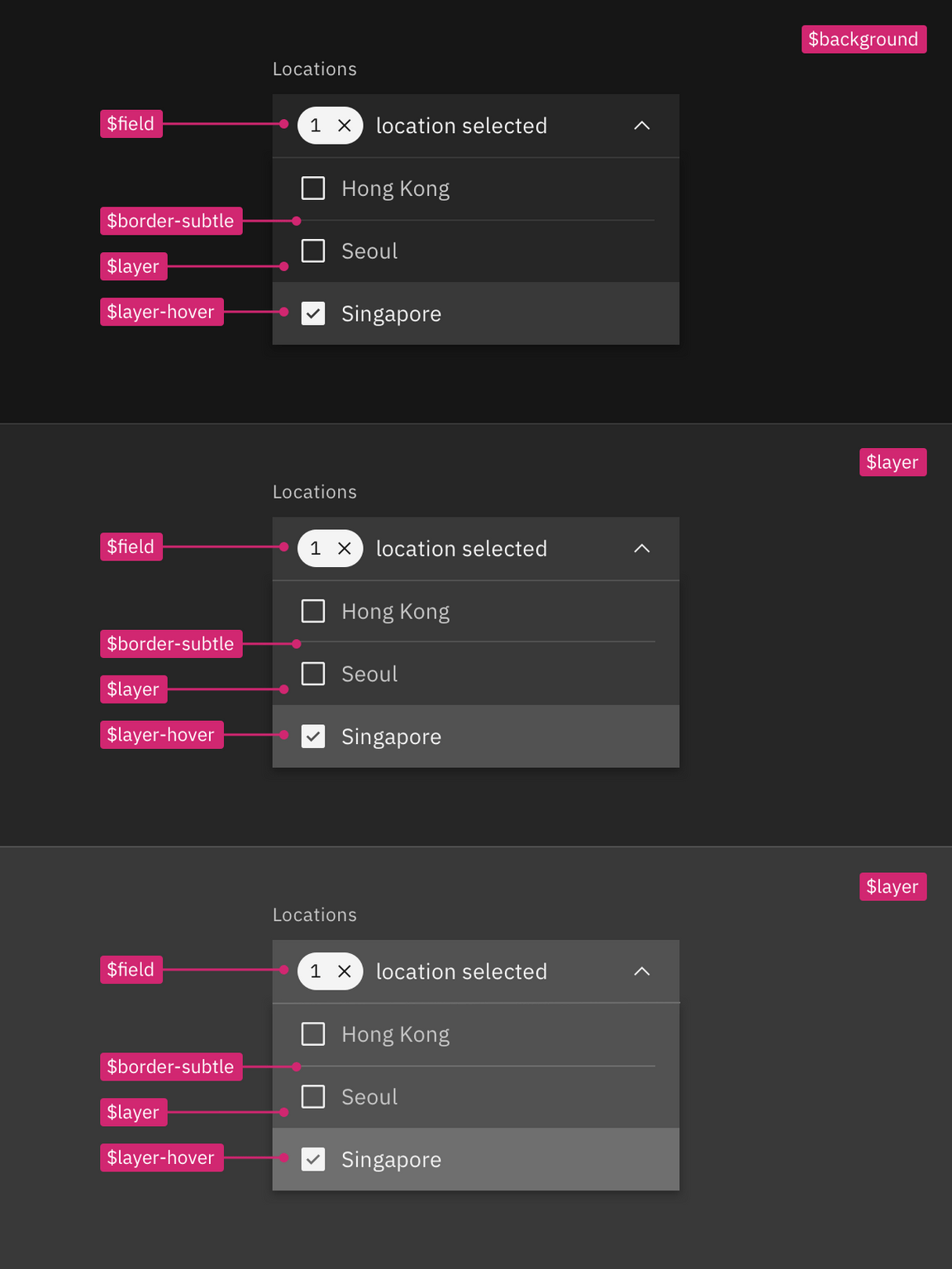
Applying contextual layer tokens in a layout
Referencing the image below, the starting base level is still the page area
behind and above the tabs; it uses $background. However, there are no sets so
with each level added simply reuse the same tokens. The tabs and the tile live
on different levels but they both use the $layer token that will output a
different values in code with the help of the layer component.
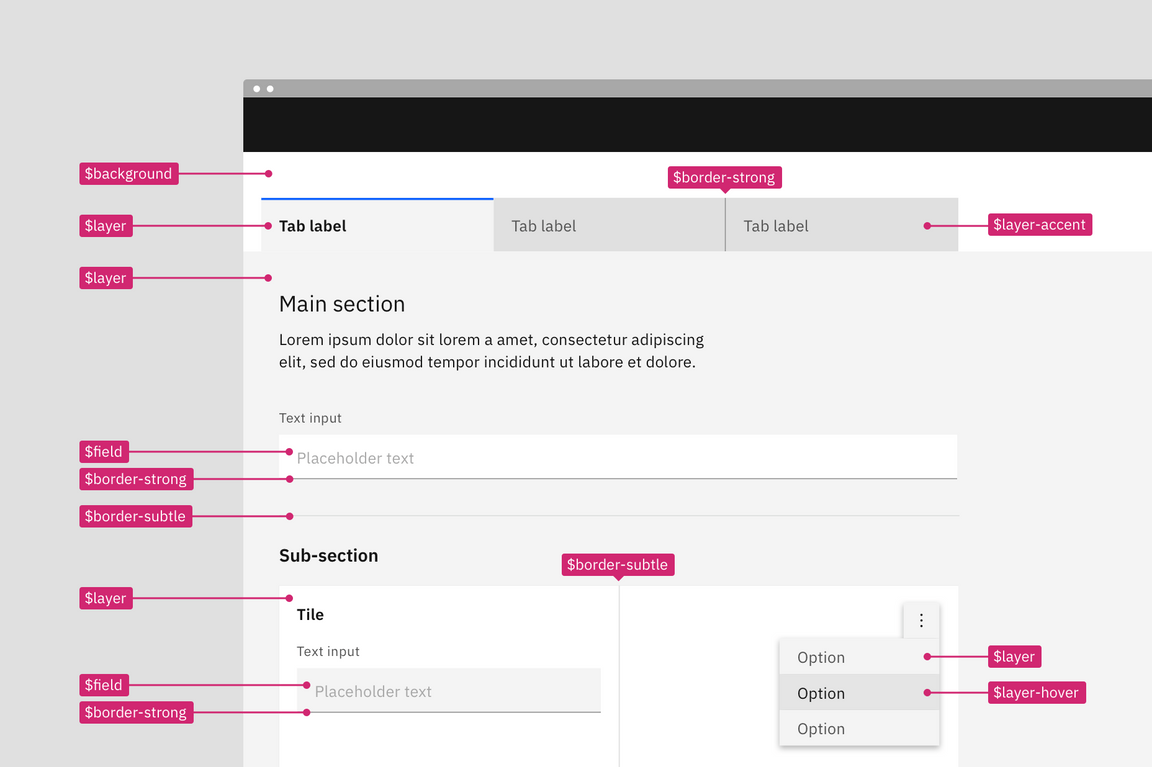

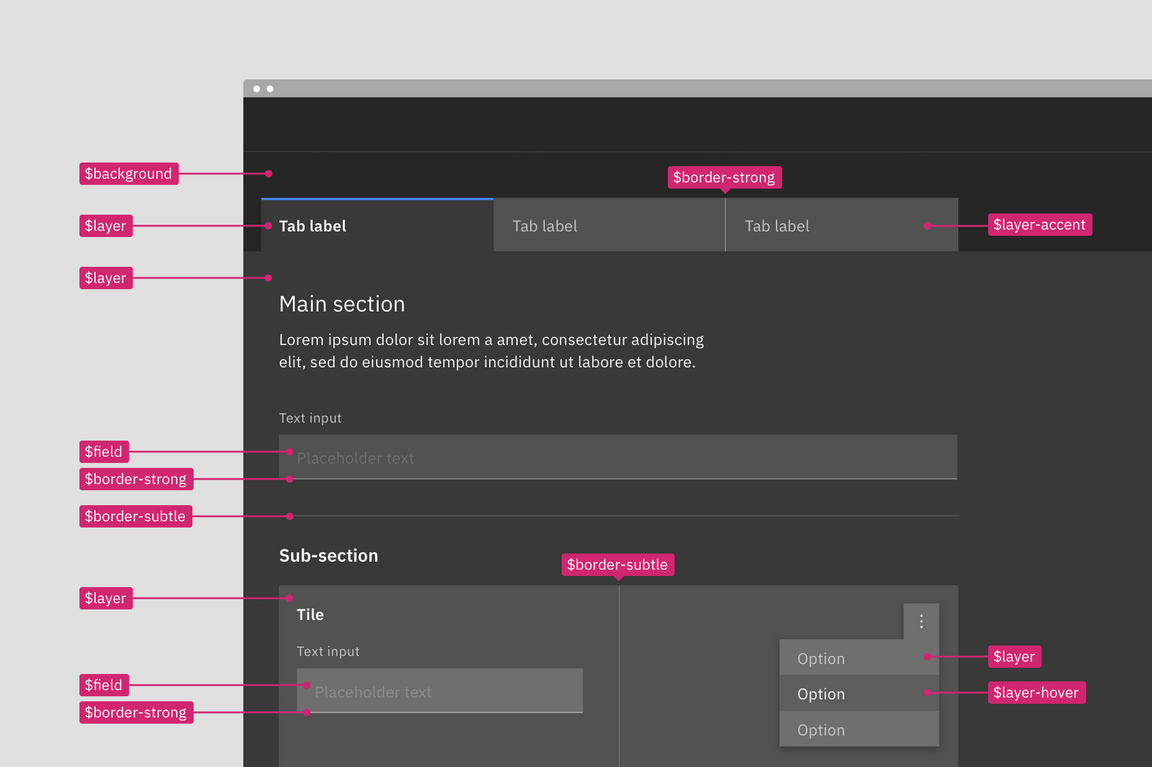
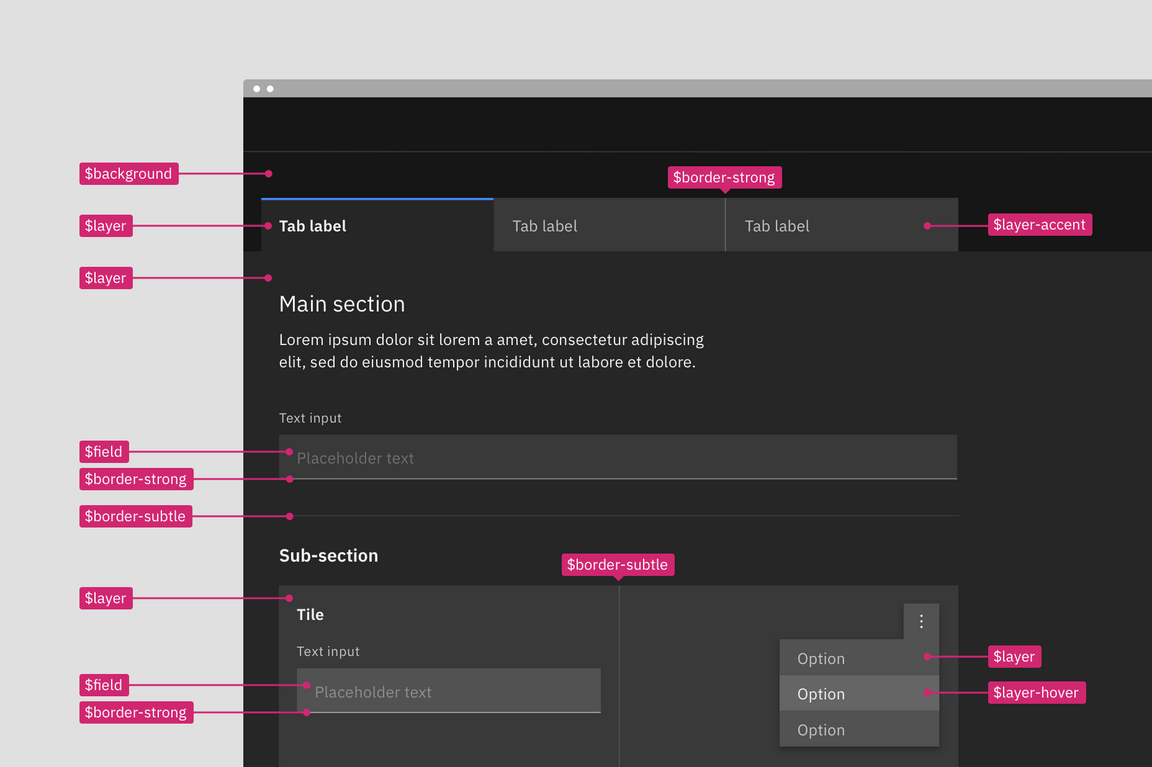
Building components with contextual tokens
Build a single component as you would normally but apply the contextual color tokens instead of the layer set tokens. Then in your product code use the layer component to express the nested layer visuals. Even if the component is never used at other layer levels it is still acceptable and encouraged to use the contextual tokens.
Note: Contextual tokens are only available in code and are not a part of the design assets. Designer should use the layer set tokens when creating assets but can include contextual tokens in their specs and redlines.
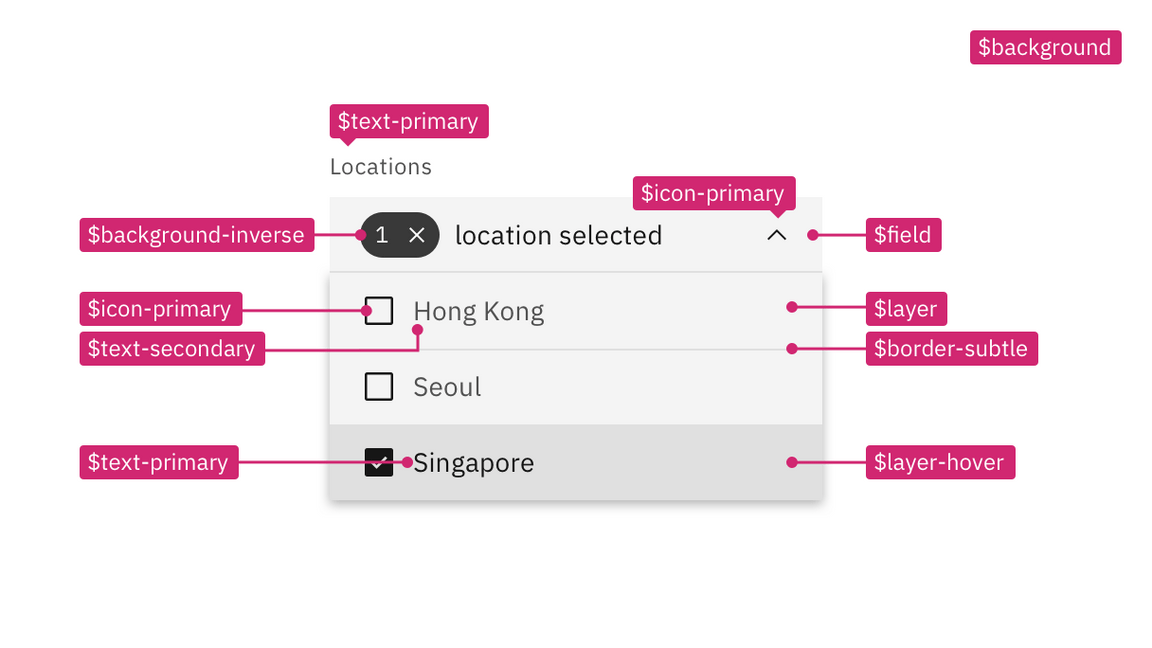
Using the layer component
Use the Layer component in order to have contextual tokens map to the correct layer value. Each token that is used to build a component rendered in a Layer component will automatically map to the next level based on the current layer set. These components can be nested up to three times, the last level corresponding to the 04 layer set of tokens. By default, tokens use the 01 layer set of tokens.
For more guidance on the layer component, see the Storybook.
Inline theming
Inline theming is used when a section of a UI needs to have a different theme from the rest of the page. Inline theming allows themes to be nested within each other without needing custom styles or overrides. In product, a common use-case for inline theming is applying a contrasting theme to a UI shell and side panels. This is especially common in light themed products or light modes. For example, the majority of a page can use the White theme while the UI shell and the left side panel use an inline Gray 100 theme. This type of inline theme pairing creates a high contrast moment that adds emphasis and focus to a workflow.
You should only need to use inline theming for major shifts in color, like high contrast moments. The more subtle transitions of color in a product are handled within each theme through the layering model tokens. It is unlikely that you’ll need to inline a White theme within the Gray 10 theme or the Gray 90 theme within the Gray 100 theme.

How it works
If your product is using the Carbon color tokens and themes then a section of the page can easily be targeted to call a different theme without having to use new tokens or manually change values. For the inline themed section simply use the same Carbon tokens you were using for the rest of the page, then using the theme component assign the new theme to the whole zone.
When designing for inline theming you’ll need to pull assets from the other theme library files (or use the theme switcher Sketch plug-in). Assets will have the same tokens names across libraries but will show different values. Then specify in the design deliverables which sections of the page will be using an inline theme.
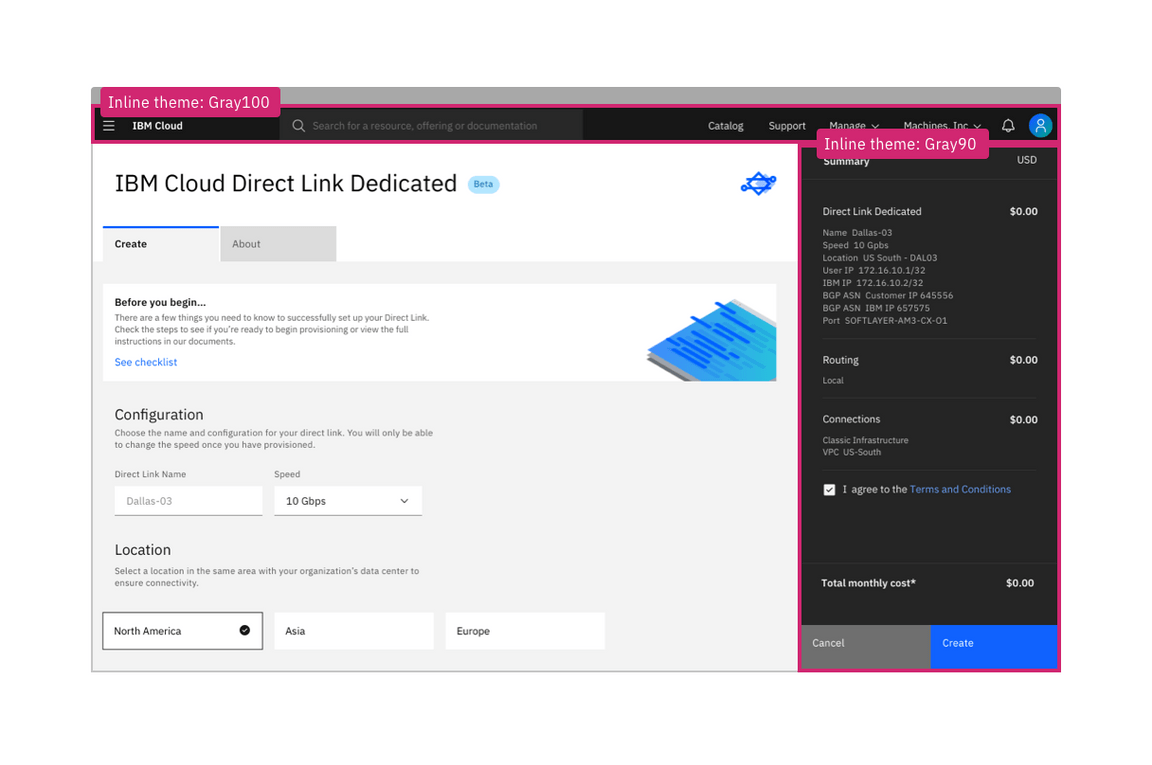
Light or dark mode
Light or dark mode is a theme setting that allows the end user to choose either a UI that is predominately light or dark in color. The UI will automatically switch from using light color backgrounds with dark color text to using dark color backgrounds with light color text. The themes use color tokens to interpret which values are need for each theme. It is the color tokens that allows a UI to so easily switch from one mode to the next. You cannot implement light or dark mode without using color tokens everywhere in your product. Hard coded values will not change when the mode is switched.
Adding the ability to change between a light or dark mode in your product is not required as an IBM product but is highly encouraged. Most operating systems nowadays (ex: MacOS, iOS, Windows, Android and Linux/GNOME 3) support dark or light modes, offering APIs so that websites and applications can automatically match the users preferred mode.
For some users, choosing light versus dark mode is not just an aesthetic choice. While research shows that unimpaired sighted user preform better in light mode, it also shows that dark mode is better for people with cataract and related disorders. Dark mode emits less light and can therefor reduces eye strain and help prevent headaches and migraines.
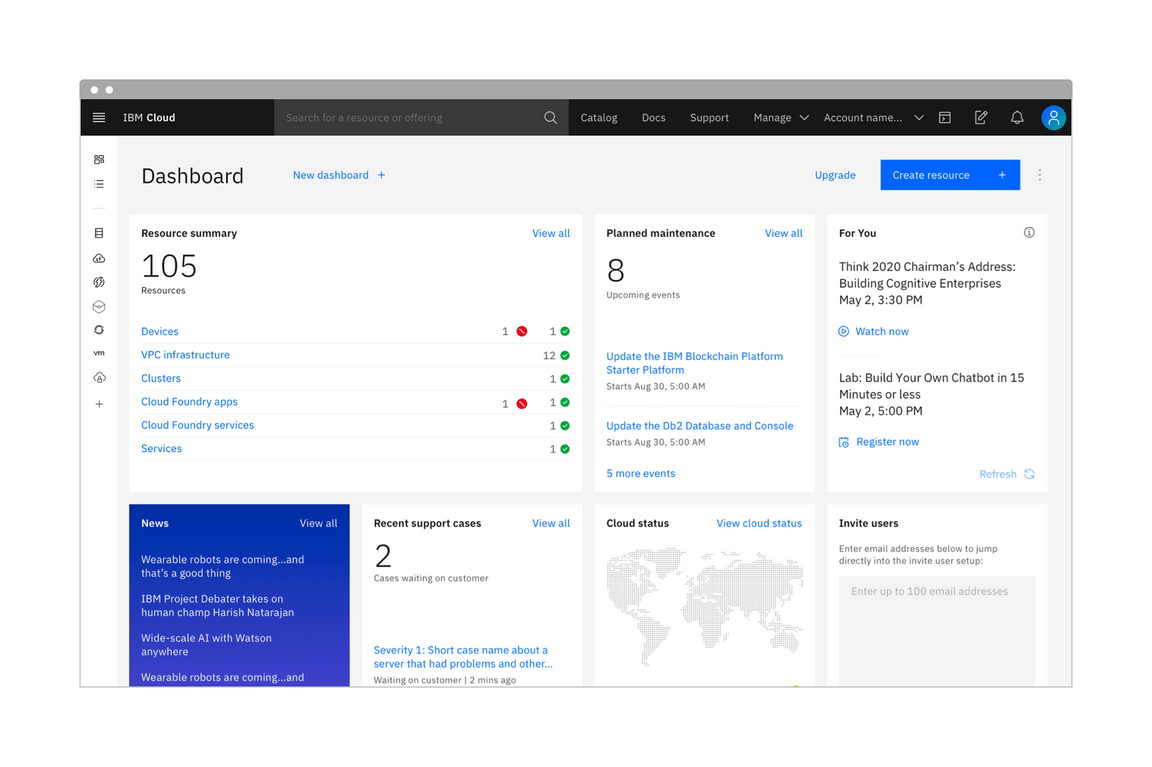
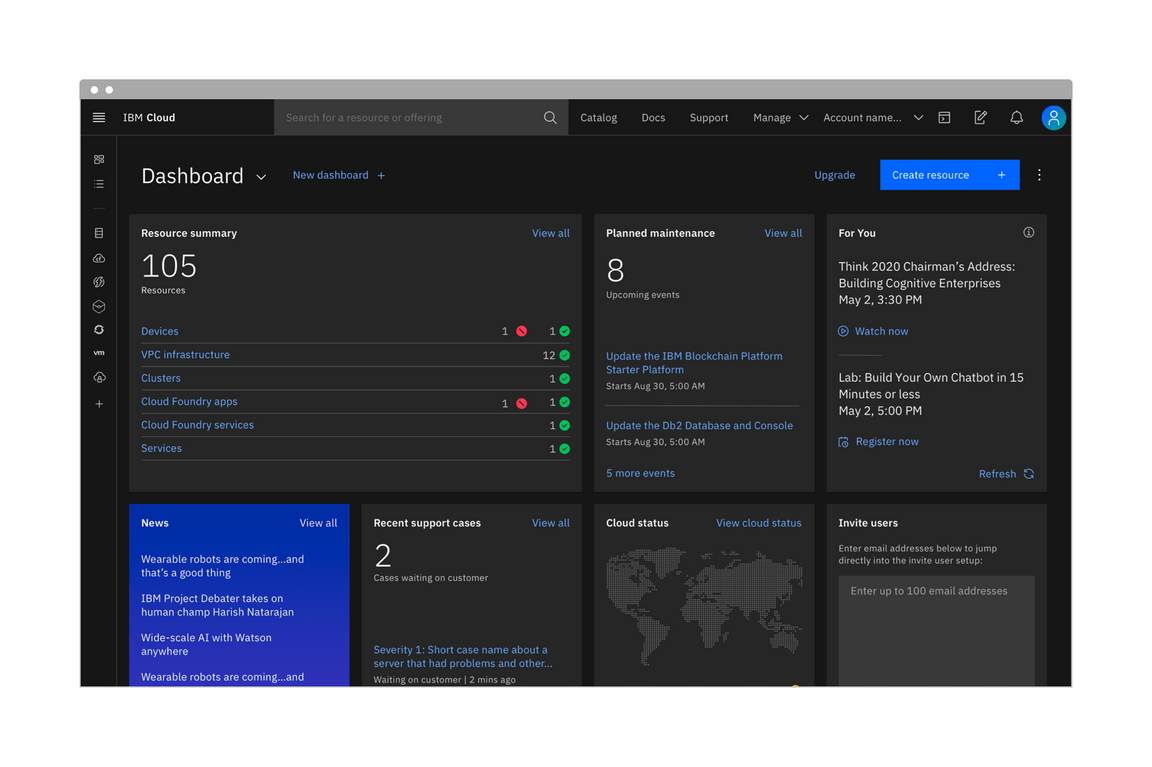
Designing for light or dark mode
You can build a light or dark mode by using the Carbon themes and color tokens. Your product will need to choose a light Carbon theme (White or Gray 10) and a dark Carbon theme (Gray 100 or Gray 90). All color in your designs and components whether Carbon, PAL or custom made should be redlined using the Carbon color tokens (it would also be to your advantage to use the color token layer styles from the Carbon design asset libraries when designing).
Redlining a design in one theme should be enough and not require duplicate designs. However, if products teams do want to have design comps in both light and dark mode then use this handy Sketch theme switcher plug-in made by an IBMer.
Creating a mode control
Since this is a user preference, you’ll need to add a control somewhere in your product for the user to make a theme mode selection. This is commonly done in a display setting, user profile, or account area. At the moment, the placement and design of this control is up to product teams, further guidance and designs for a mode control in IBM products may be offered in the future.
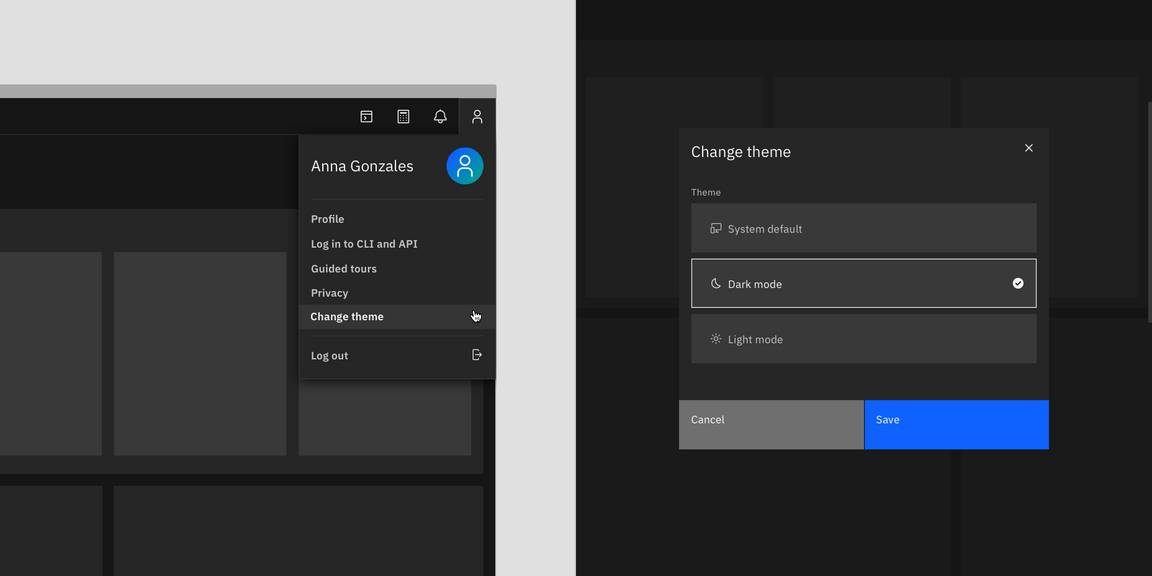
In IBM Cloud (beta), the theme control can be accessed through the user profile panel in the header (left). The "Change theme" link triggers a model where the user can save their theme preference (right).
Inline themes
Mixing themes inline is still allowed with light or dark mode. Mixing inline theme contrast between elements in different modes is also allowed. It is very common for products to have side panels or UI shell elements be high contrast in light mode but low contrast in dark mode. These relationships can be mapped in code using the the theme component. Note that smaller components built with an inverse tokens (like tooltip) should remain high contrast when switching modes.
Consider illustrations
You’ll need to account for illustrations and other imagery like pictograms changing color between modes. Otherwise you may end up having very high contrast images in one mode vs the other. A low effort way to help design for this is to use transparent backgrounds on images and tokens with svgs files. More in depth ways to account for this would be switching out the artifacts entirely when changing modes.